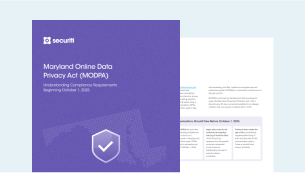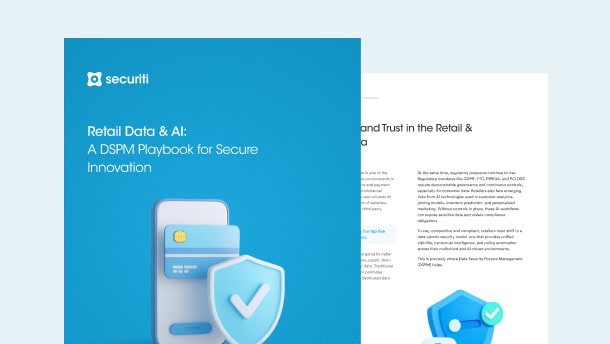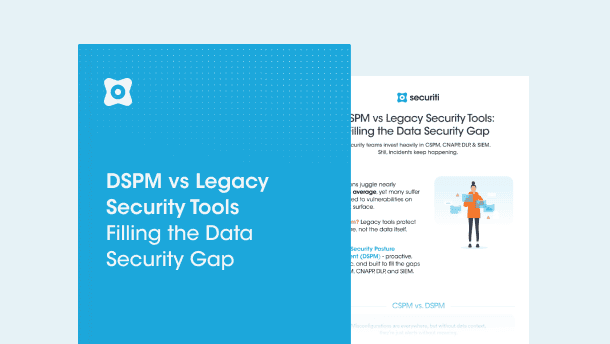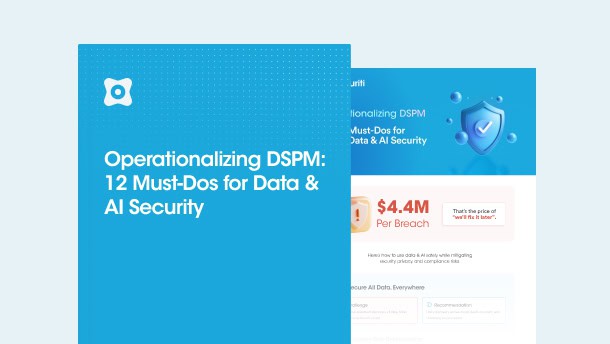LLM01 - Prompt Injection
Injection threats have existed for a long time, enabling threat actors to execute malicious codes or actions and compromise applications. Prompt injection is one such threat. Ranked as the topmost critical vulnerability, prompt injection allows the attacker to compromise the LLM through meticulously crafted prompts. It manipulates the LLM applications to bypass the initial instructions and follow the attacker's intentions.
OWASP lists two different kinds of prompt injections commonly employed by attackers: direct and indirect prompts.
In direct prompt injection, the attacker interacts with the LLM directly, manipulating it through malicious prompts. For instance, the attacker could ask the LLM to pretend like a chatbot and, if given an instruction, how it would respond. Often, the prompt may include exploits, such as a remote execution code, in between the prompt instructions.
In the indirect prompt injection case, the attacker attempts to execute malicious codes through a corrupt webpage or file. If a user prompts the LLM to go through that website, for instance, to summarize the content, it would inadvertently execute the code.
Prompt injection is a serious security risk in LLMs that enterprises should be wary of as it could allow the attackers to jailbreak the LLM and gain control over it.
Preventive Measures
- Access to the LLMs should be limited. Role-based permissions should be applied to give minimum-level access.
- Keep humans in the loop for approvals, especially when LLMs access external systems, such as in the indirect prompt injection action above.
- A meticulous system, controls, or policies are required to segregate unwanted or malicious content from the prompt.
- All LLMs should be treated as untrusted, and thus, when the system is designed, appropriate security and governance controls must be applied.
LLM02 - Insecure Output Handling
As the name implies, it is an LLM output-related risk. Suppose a use case where the LLM generates SQLs, allowing teams to streamline and accelerate data analysis. Now, what could go wrong if a malicious actor gets to the LLM and manipulates it to generate SQL that drops all the tables from the database? It would be disastrous for the organization. Threats like SQL vulnerabilities could happen if the downstream agent accepts LLM outputs without careful handling, i.e., sanitization, validation, or filtering.
One reason insecure output handling is placed right after prompt injection is that this risk usually arises with a successful prompt injection attack.
Preventive Measures
- Apply a zero-trust security approach when dealing with LLMs. Consider these systems as untrusted users that require sanitization and validation.
- Consider the guidelines provided under the OWASP Application Security Verification Standard (ASVS) framework for secure output handling.
LLM03 - Training Data Poisoning
It is common knowledge that LLMs are trained on vast volumes of data. In fact, data is also needed to fine-tune LLMs' performance and efficiency. However, if the ingested data is corrupt, the LLM will behave abnormally, leading to unethical, biased, or harmful responses. Data poisoning is a tough nut to crack.
To understand a data poisoning attack, let’s take the following situation as an example. Imagine a user asking an LLM to review certain files and databases and summarize its analysis for investment purposes. Without the user's knowledge, an attacker plants false data in the files or databases. As a result, the LLM generates an incorrect or flawed analysis, negatively impacting the user's decision.
Preventive Measures
- Gain complete visibility of all the sources and ensure they are reliable.
- Verify the legitimacy of the training data across its lifecycle.
- Mechanisms should be in place to validate the LLM's outputs and ensure they are correct, accurate, and trustworthy.
LLM04 - Model Denial of Service
The threat listed at number 4 is the equivalent of Distributed Denial of Service (DDoS). In the LLM case, the attacker could send a complex query, prompting the LLM to produce unexpected content that might require consuming excessive resources. Another example is an attacker overwhelming the LLM with too many inputs, causing the model or the application that the model powers to slow down.
Prevent Measures
- LLM’s resource utilization should be monitored for abnormal spikes.
- Input should be validated and limited, preventing the LLM from being overwhelmed with excessive prompts.
- API requests should also be limited, and the resources should be capped.
LLM05 - Supply Chain Vulnerabilities
It is an umbrella term for different types of vulnerabilities, from prompt injections and data poisoning to compromised ML models and biased results. For example, a malicious agent may poison the data sources of a weather forecasting model, causing the model to make false alerts due to inaccurate predictions.
Preventive Measures
- Perform supplier assessment, evaluating not only the supplier but also their policies or terms and conditions.
- As a security measure, apply model monitoring for abnormal behavior.
- Use plugins that you have tested and trust.
- Apply controls recommended in the OWASP Top Ten's A06:2021 – Vulnerable and Outdated Components to scan for vulnerabilities and patch components.
Another common risk in LLMs is the leakage of personally identifiable information (PII), especially sensitive data. Since vast volumes of data are used to fine-tune or train LLMs, these datasets often contain sensitive data. If appropriate controls, such as dynamic masking or sensitive data redaction, aren’t used around LLMs, they may inadvertently disclose sensitive information.
Take, for instance, an LLM-powered healthcare application. If the LLM is inadvertently trained on real patient records, the application might reveal sensitive information about actual patients. Simultaneously, most LLMs, such as the ChatGPT, use users’ prompts for training. In such scenarios, sensitive data may be exposed if users unintentionally expose sensitive information in prompts.
Prevent Measures
- Create and implement data sanitization controls to remove sensitive data from training datasets.
- With validation policies and controls, security teams can prevent threats like data poisoning by filtering out malicious prompts.
- It is important to create awareness through employee training on the risks associated with LLMs and data.
LLM07 - Insecure Plugin Design
Insecure plugins are a threat that existed even before LLM, as seen with web services or web-based applications. These separate codes can lead to harmful consequences, such as exfiltration, unauthorized authentication, or indirect prompt injection.
A common example of this vulnerability is a plugin that doesn’t verify inputs and performs actions without authentication. If an attacker discovers this gap in an LLM, they could execute malicious code or gain excessive privileges.
Preventive Measures
- Least privileged access should be implemented to limit access to all the plugins to only authorized users.
- Always test and validate the plugins to check for vulnerabilities and risks.
- Leverage OAuth2 and API keys to enable plugins to authenticate only authorized identities.
LLM08 - Excessive Agency
Excessive agency is a new vulnerability found and listed in the OWASP Top 10 for LLM Applications. The problem occurs when the LLM is provided with excessive permissions to read, write, or execute codes or given total autonomy, enabling the application to execute open-ended functions. For instance, a developer integrates a plugin into the LLM, giving it the ability to read documents for analysis. However, the plugin the developers leverage for the purpose may include the additional functionality of modifying and even deleting the document. If an indirect prompt injection occurs, it could manipulate the agent into deleting valuable documents from the repository, consequently harming the business and its reputation.
Preventive Measures
- Validate plugins and ensure minimum necessary functionalities are provided to the agents.
- Leverage only specific plugins to avoid open-ended functions.
- Human-in-the-loop practice should be considered to validate and approve actions.
LLM09 - Overreliance
Overreliance is another new category of risk associated with LLMs. It occurs when people or applications start relying on LLMs without proper controls, policies, or oversight. Over-dependence on LLMs can result in contextual or factual errors in the outcomes of the LLM, leading to misinformation or misguidance.
Take, for instance, an employee who uses an LLM to summarize the quarterly performance of the business. The company makes strategic decisions based on the data presented in the LLM-generated report. Now, one quarter later, the team realizes that the data is incorrect. However, by that time, the damage had been done.
Preventive Measures
- It is critical to regularly monitor the outcome generated by the LLM, ensuring it is reliable and consistent.
- Establish mechanisms to monitor the app’s or users’ interactions with the LLM, such as content filtering, sensitive data redaction, etc.
- Build automated validations to cross-verify facts.
LLM10 - Model Theft
The last one on the OWASP Top 10 List for LLM Applications is the model theft risk. It is a threat where the malicious actor gets unauthorized access to LLM repositories or infiltrates proprietary LLMs, leading to sensitive data exposure, unauthorized usage, or loss of reputation. Suppose that an LLM has a misconfiguration setting unchecked. If a malicious user discovers such a vulnerability in a proprietary LLM, they will get unauthorized access to it. This could mean they can extract the parameters to replicate functionality or inject malicious prompts, to name a few.
Preventive Measures
- To mitigate the risk, it is strongly recommended that access control be implemented to limit access to the LLM repositories and training environments.
- Continuously monitor the access logs to identify abnormal trends in LLM access or usage.
- Prevent side-channel attacks that occur due to prompt injections by implementing appropriate controls.
Protect Your LLM Landscape & Enable Its Safe Use with Securiti
Securiti Data+AI Command Center is built to empower organizations to enable the safe use of their Data and AI by leveraging contextual intelligence and automated controls. The solution provides unified contextual intelligence and automation for AI and data security, governance, privacy and compliance.
Our Data+AI Command Center can help you safeguard your LLMs and data landscape against the OWASP Top 10 LLM threats:
- Discover AI models & agents (LLM-08 Excessive Agency, LLM-09 Overreliance, LLM-10 Model Theft)
- Assess AI model risks (LLM-08 Excessive Agency, LLM-09 Overreliance, LLM-10 Model Theft)
- Understand data use with AI (LLM-03 Data Model Poisoning, LLM-06 Sensitive Data Disclosure, LLM-08 Excessive Agency, LLM-09 Overreliance)
- Implement in-line data and AI controls for security & privacy - Monitor and mitigate risks at various LLM interactions: response, prompt, and retrieval via context-aware LLM Firewalls (LLM-01 Prompt Injection, LLM-02 Insecure Output Handling, LLM-04 Model Denial of Service, LLM-06 Sensitive Information Disclosure, LLM-09 Overreliance), and
- Comply with global regulations and standards - Leverage common tests and controls to automate compliance with global data and AI laws and frameworks.
Request a demo to learn more about the Data+AI Command Center.











































